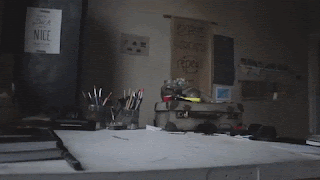Bringing a Super 20 MCQ on Harbor Docks which is frequently asked in Exam
1. The difference in height between highest high water and lowest low water is called :
A. Mean range
B. Maximum range
C. Maximum rise
D. Mean rise
2. If the maximum spring rise is 2m and height of the waves expected is 4m, then the breakwater height above the datum will be :
A. 2.5m
B. 4m
C. 5m
D. 7m
3. If H is the height of the wave expected, then the height of the breakwater is generally taken as
A. 1.2 H to 1.25 H above the datum
B. 1.2 H to 1.25 H above the low water level
C. 1.2 H to 1.25 H above the high water level
D. 1.2 H ti 1.25 H above the mean sea level
4. In multiple point mooring system, vessel is secured to minimum of :
A. Two points
B. Four points
C. Six points
D. Eight points
5. Consider a pair of lock gates having a rise n, width of lock B and length of each gate L. If w is the unit pressure of water per unit length of gate, then the compressive force on the gate is given by :
A. wLS/n
B. wLS/4n
C. wLS/2n
D. wnLS/4
6. By increasing the rise of lockgates,
i. The length of the lock gate will increase
ii. Transverse stress due to water pressure on the gate will increase
iii. Compressive force on the gate will increase
A. i and ii are correct
B. i and iii are correct
C. Only ii is correct
D. Only iii is correct
7. Which of the following is a fixed type mooring accessory?
A. Bollard
B. Buoys
C. Cables
D. Anchors
8. The significant wave height is defined is the average height of the :
A. one third highest wave
B. one fourth highest wave
C. one fifth highest wave
D. one tenth highest wave
9. If Hs is the significant wave height, then the average wave height and highest wave height respectively are given by :
A. 0.6Hs and 1.67Hs
B. 0.6Hs and 1.86Hs
C. 1.27Hs and 1.87Hs
D. 1.27Hs and 1.67Hs.
10. When a wave strikes a vertical breakwater in deep water, it is reflected back and on meeting another advancing wave of similar amplitude merges and rises vertically in a wall of water. This phenomenon is called :
A. Surf
B. Clapotis
C. Fetch
D. Swell
11. Which of the following structures are constructed parallel to shore line to develop a demarcating line between land area and water area ?
A. Sea walls, bulk heads and groynes
B. Sea walls, bulk heads and revetments
C. Sea walls, revetments and groynes
D. Bulk heads, revetments and gronyes
12. Which of the following type of sea walls results in greatest protection of shore structures?
A. Vertical sea wall
B. Sea wall with batter
C. Stepped sea wall
D. Sea wall with concave face
13. Which of the following are repair docks?
A. Marine railways, dry docks, floating docks, wet docks
B. Dry docks, wet docks, floating docks, lift docks
C. Wet docks, floating docks, lift docks, marine railways
D. Wet docks, lift docks, marine railways, dry docks
14. Which of the following structures protects the shore by trapping of littoral drift?
A. Groynes
B. Sea walls
C. Revetments
D. Moles
15. Which of the following conditions of loading imposes the greatest load on the foundation in case of dry docks?
A. When the dock is empty
B. When the dock is empty with the ship of maximum tonnage
C. When the dock is full of water
D. When the dock is dry and is under construction.
16. For designing the dock, the proportion of ship load assumed to be borne by keel blocks is :
A. 5/8
B. 3/8
C. 3/16
D. 5/16
17. If W is the weight of the ship and V is the velocity at right angle to the berth, then the berthing energy of the ship, when it first strikes the fenders, while coming alongside at a quarter point contact is :
A. WV²/g
B. WV²/2g
C. WV²/4g
D. WV²/8g
18. A ship strikes the berth generally at an angle
A. 90° with the face of the dock
B. 45° with the face of the dock
C. 30° with the face of the dock
D. 10° with the face of the dock
19. Consider the following statements.
i. Fenders is the cushion provided on the face of the jetty for ships to come in contact.
ii. Slip is the space of water area between two adjacent piers where ships are berthed.
iii. Pier head is a structure constructed nnear the tip of a break water near the harbour entrance.
Of the statements :
A. i and ii are correct
B. ii and iii are correct
C. i and iii are correct
D. i, ii and iii are correct
20. A ship is berthed in a chamber and lifted by principles of buoyancy. Such a chamber is called
A. Dry dock
B. Wet dock
C. Floating dock
D. Refuge dock


Comments
Post a Comment